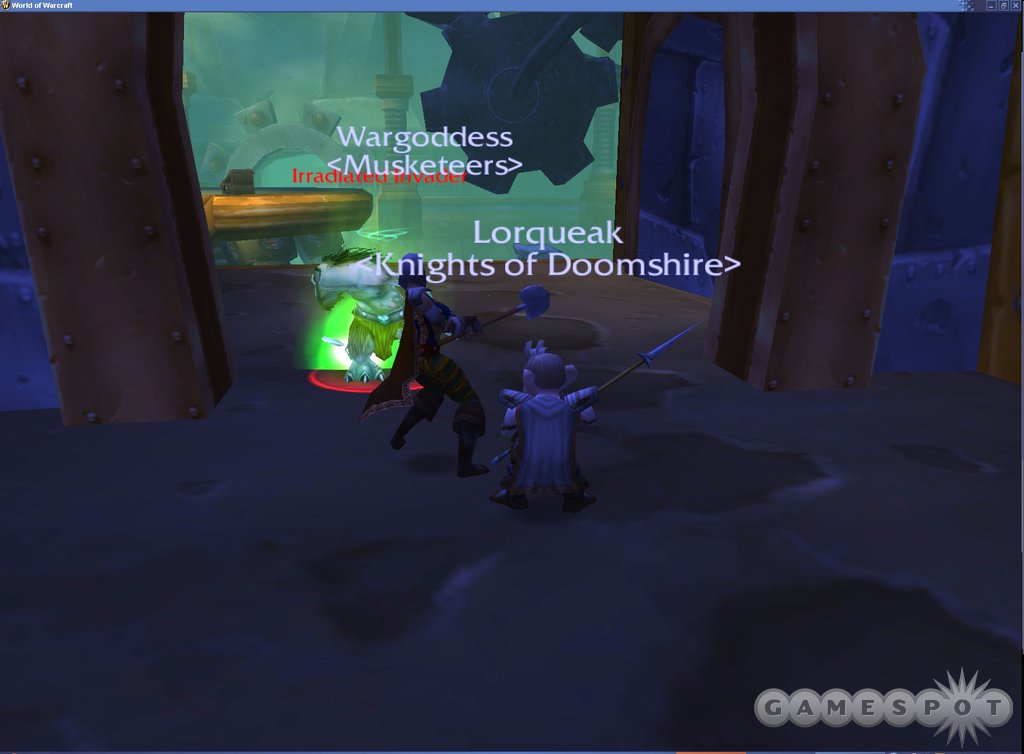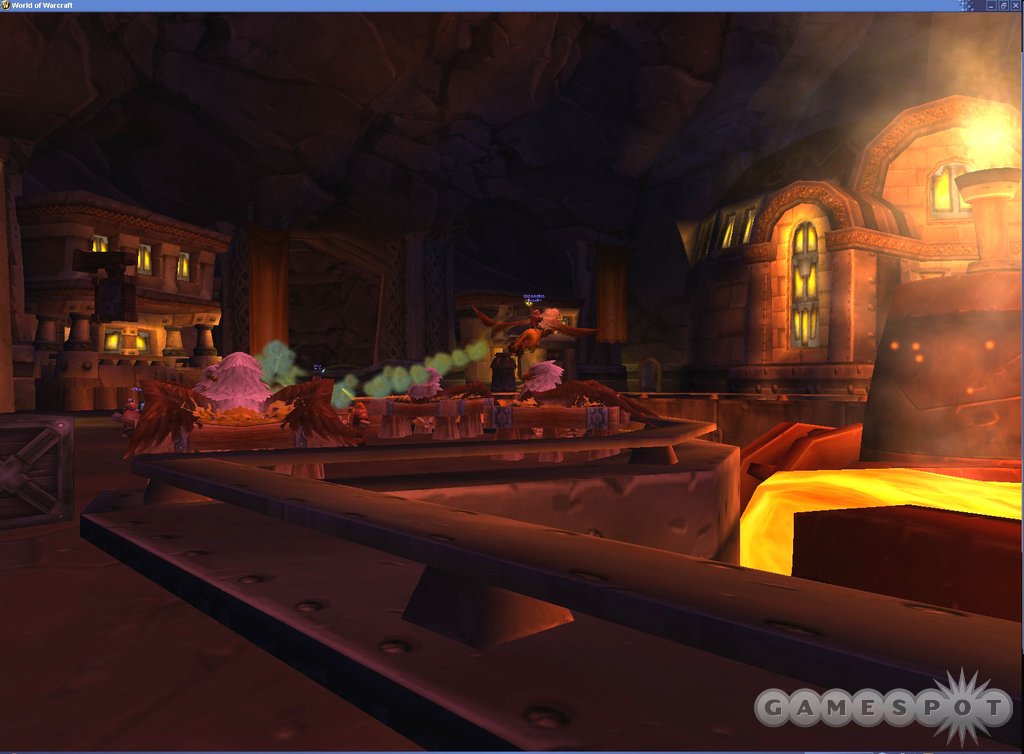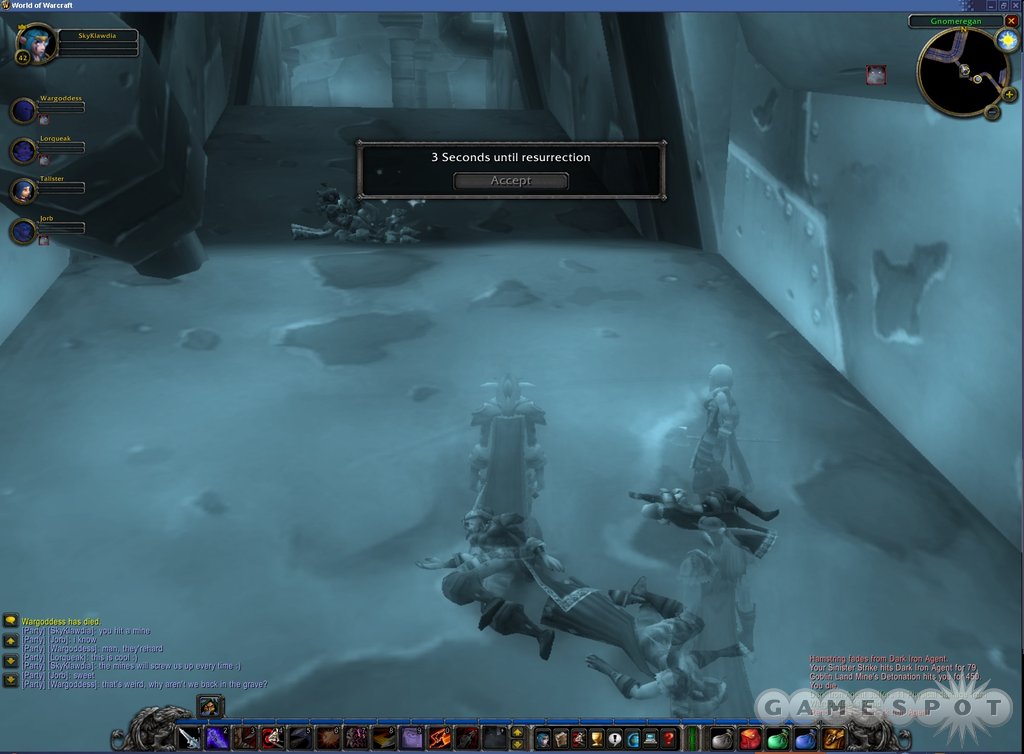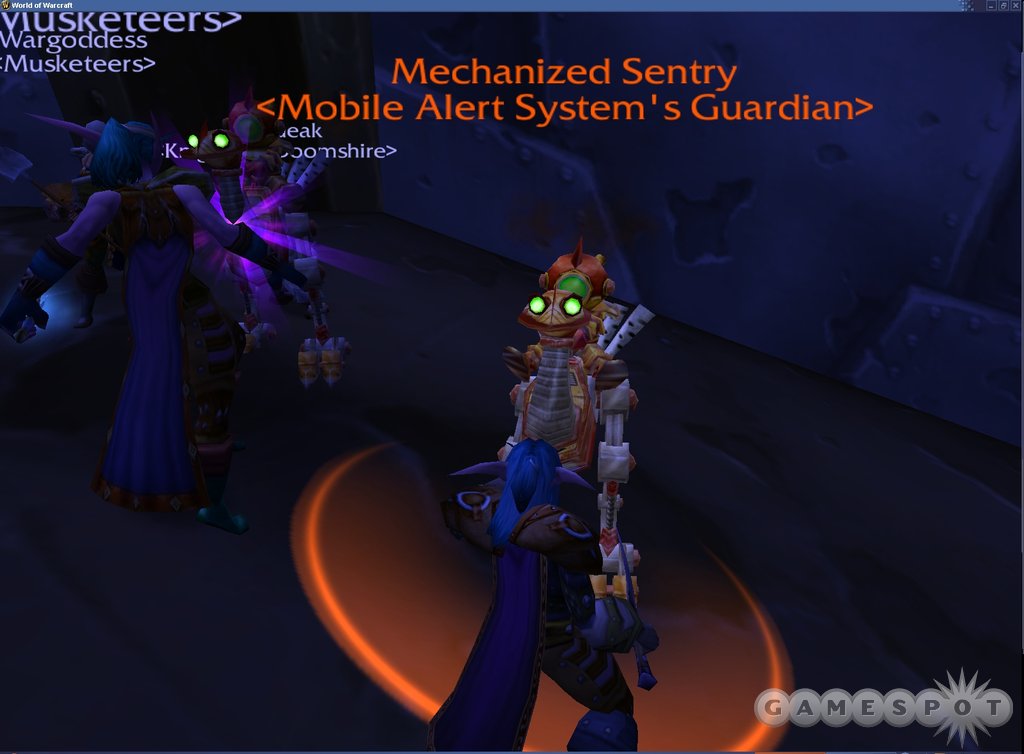World of Warcraft Closed Beta Final Hands-On
The closed beta test for Blizzard's highly anticipated online game has ended. Get the last details here.
Though a few features, such as talent trees for the paladin and hunter classes, have yet to be implemented, Blizzard has clearly moved into the polishing phase of its World of Warcraft beta test. This is evident in some of the game's fundamental mechanics, such as the rest system. Though it was decried by testers when it was first introduced, the rest system has evolved in such a way that it no longer penalizes players who wish to play for extended periods. Rather, it merely rewards those who haven't played for a long time, just as it was intended. Blizzard has also implemented a few new features recently, including item durability and raid groups.

Prior to the introduction of raid groups, parties were limited to a maximum of five members. A raid group is essentially eight parties put together. Although you no longer get quest items from quests when you join a raid group, the advantages of these parties drastically outweigh the disadvantages when in a player vs. player (or "PvP") situation. When in a raid group, the fact that you can communicate with everyone else in the group greatly facilitates attacks on enemy settlements. In addition, the raid-group leader can organize each of the individual five-member parties in any way. This allows each party to have the requisite priest and warrior for healing and tanking capabilities.
The concept of item durability has also been introduced to the World of Warcraft. Weapons and armor now have a durability value that will decrease with use. So, stabbing enemies with your sword will gradually subtract from that sword's durability, and getting attacked by enemies will cause the durability of your armor to slowly decrease. The items remain at full strength until their durability reaches zero, at which point the items lose their effectiveness. You'll have to keep your weapons and armor in good repair as you travel--fortunately, any armor or weapon vendor in the game can repair your equipment for a fee.
In practice, we found that we didn't have to repair our items too often in the course of normal play at higher levels. In particular, the magic-casting classes tend to have things a bit easier, as they normally are blasting foes with spells from afar instead of using their weapons and putting their armor in harm's way. Blizzard has stated that, ideally, all character classes will experience roughly the same rate of decay in their items, and that frequently used items should eventually have to go in for repairs every few days. However, at this time, an extended excursion into one of the game's tough instanced dungeons seems to require a visit to the village repair shop ahead of time. We quickly learned that making a pit stop at the repair shop was a much better alternative to having our armor-protection level drop to zero while facing a ghostly dragon or a prince of thieves.

The travel systems in the game have constantly evolved, from the addition of more linked flight points in the Eastern Kingdoms to the introduction of ships and zeppelins. Another recent addition to this system has been the Stormwind-Ironforge tram. The ingenious gnomes were responsible for the design and implementation of this invention, which is essentially a subway route that connects the human city of Stormwind to the dwarven capital of Ironforge. The tram is free, it's faster than flying overland, and it provides a nice, soothing underwater view during one stretch of the trip. On the player vs. player server, however, the tram has served an additional purpose--it's provided a backdoor of sorts for Horde raids moving from one major city to the next. While the cities themselves are rife with high-level guards roaming their streets, the tram currently has no security presence of any sort (and to get on and off the subway, you need to make a level transition, which is accompanied by the proper load time and has the side effect of getting guards off your tail). Horde players who attempt this tactic frequently find themselves coming up against waves of Alliance players, however, especially in Ironforge, where players tend to linger as they visit the auction house and gather groups for adventures.
The loose basis for the so-called "honor system" on the player vs. player faction-war server has been implemented recently. When fighting players of the opposite faction, you will now see a message on the screen if you manage to defeat them. If that player was close to you in level, you'll be given an "honorable kill" message. If you kill a player many levels beneath you, you'll be given a "dishonorable kill" message. This system is planned to be more robust in the future, with titles given to players who rack up numerous honorable or dishonorable kills, though nothing has emerged yet. It's also not known if and how this system will account for raid situations, in which there are typically great numbers of players of all levels onscreen at once, and groups of lower-level players cannot effectively be ignored by higher-level players.
Death Before Dishonor
Along with the honor system, the faction system in the game has been expanded to account for all races and factions in the game. For example, a given player will now have faction levels for all four Alliance races and all four Horde races. Players will always be at war with the opposing faction and so cannot improve that relationship, and players will always be on good terms with their allies. However, it is possible to improve your faction standing with other races in your alliance--orcs can gain greater standing with the undead, humans can gain greater standing with the night elves, and so on. The immediate advantage to this is that if you get your standing with a particular race high enough, you'll be able to purchase mounts from that race. For example, the human mount is a horse, and the night-elf mount is a giant cat. Humans would not normally be able to purchase a tiger or panther to ride, but if they increase their standing with night elves, eventually the night-elf mount merchants will allow humans to buy their goods.

There are other factions that come into play during quests, so you can actually gain standing with factions like the different centaur clans in the dusty land of Desolace, or the furbolg clans that make their home in Felwood. You can also gain and lose standing in the "neutral" goblin cities throughout the world. Previously, on the player vs. player server, Horde and Alliance players who ran into each other in goblin cities (particularly the contentious Booty Bay) would often spar, and in some instances claim the town altogether and run around slaughtering anyone of an opposing faction who dared enter. Now, the goblin bruisers who dot these towns actively discourage fights (they're bad for business, you see) and will attack players who start fighting in a goblin city. In addition, you'll lose standing in goblin cities if you fight there, and if you lose enough standing, their guards will attack you on sight and you won't be able to use the vendors in those cities at all. Whether this cuts down on battle in the neutral cities, or just causes the fights to move immediately outside town, remains to be seen.
Another recent change can be seen in the behavior of the flight masters who are attacked by players of the opposite faction. These characters are often attacked, as they can prevent nearby players of opposing factions from traveling by flight. Now, the flight masters have not only been increased in strength, but if you attack them, you can expect their animal friends to come to their defense. Attacking a gryphon master will spawn a group of angry high-level gryphons that will aid him with beak and claw; attacking a bat master will summon a scene out of a horror movie. Flight masters formerly just spawned generic guards to help them out, so it's nice to see that the flight masters' faithful beasts are there to help their masters in a pinch.

Blizzard has continued to add little touches to the game's presentation that have subtly enhanced the look and feel of Azeroth. For instance, a light-blooming effect quietly crept into a recent patch--you may be familiar with such effects from games ranging from Prince of Persia: The Sands of Time to Fable and Jade Empire. World of Warcraft's implementation of this effect is less obvious than in those games, however, and we found it lends the highly diverse environments in the game an ethereal quality that helps bring them to life. The artists have also been filling in many of the little gaps that have been apparent throughout the beta. Most inventory items now have unique artwork, for instance, and all the different areas finally have hand-drawn maps that make it a lot easier to find your way around--especially in the cities, where each district is clearly laid out and labeled.
Blizzard has a history of making radical changes to its games between the end of the beta-test process and the retail launch, but World of Warcraft seems more likely to instead undergo constant fine-tuning in that interval, and perhaps even after it becomes available to the public later this month.
Got a news tip or want to contact us directly? Email news@gamespot.com
Join the conversation